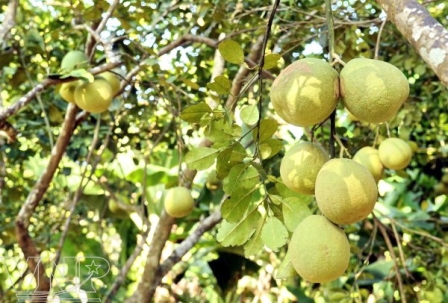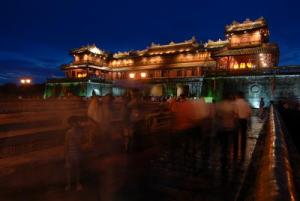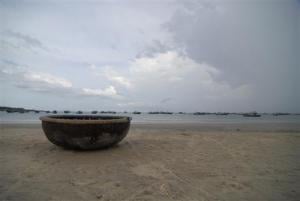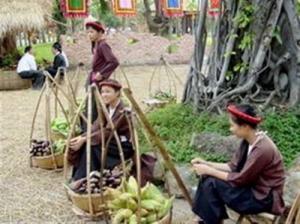Thuy Bieu Ward: Savage Past, Sweet Present, Promising Future

Thuy Bieu Ward is situated around 4 km to the southwest of downtown Hue and lays beside the Perfume River’s bank. It combines two old villages, Nguyet Bieu and Luong Quan. Thuy Bieu is known for its peaceful ambience, vast pomelo gardens and century-old wooden houses. These traditional houses, called Nha Ruong, are common not only in Hue but also in many central provinces. Visitors often come to Thuy Bieu to see these houses, some of which are more than 100 years old, and to enjoy the fragrant gardens usually surrounding them.
Gardens in Thuy Bieu have the remarkable presence thanh tra – a kind of pomelo. The fruit is considered a local specialty in the area. Thanh tra pomelos are smaller and lighter compared to other citrus fruits. They are easier to peel and are characterized with lighter tone of sweetness to the taste. Harvest season for thanh tras are normally on autumn, however visitors come at any time of the year. During spring, Thuy Bieu is fragrant and decorated with the white flowers of pomelos, while in the summer, it is colored green with young fruits waiting to ripen and be picked. The village also happens to sit in a very strategic locationat the Vong Canh Hill which is a wonderful observation spot, allowing visitors to have a good view of the Hon Chen Temple on Ngoc Tran Mountain opposite to it. The temple cradles several large and small religious structures. From there, the 400-year old Thien Mu pagoda situated on Ha Khe Hill can also be viewed.
From Vong Canh, you can also see Truong Tien bridge which was built from the 19th century. Savage Past Thuy Bieu, despite its sweet and pleasant atmosphere, used to have a dark history. In the distant past, during the reign of the Nguyen Dynasty (1802-1945), the villages used to home to Ho Quyen (Tiger Ring), an amphitheater for fights between tigers and elephants that were used to entertain royalities. The amphitheater was built after King Minh Mang, the dynasty’s second emperor, was almost attacked by a tiger which jumped toward his boat during a fight in 1829. The rings, built in 1830, consisted of bricks of 3-4 meters apart with the outer one having a diameter of 45 meters and height of 4.5 meters. Between the stairways is the entrance for elephants, while tigers and panthers were kept captive in five cages opposite to the royal observation stand. Old documents retrieved revealed that fights between elephants and tigers were considered big festivals. The last recorded fight was in 1904.









